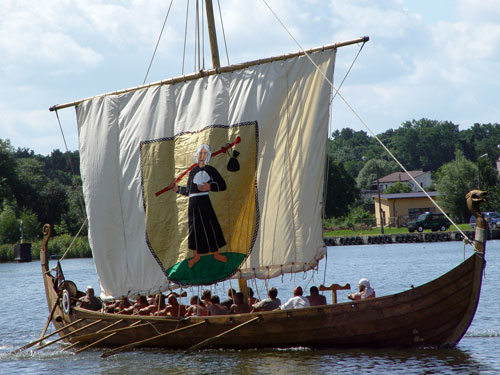This article is more than 1 year old
Genetics and technology make Columbus Day a fraud
But who cares, it’s a day off
Monday's Columbus Day holiday may celebrate the first time a European "discovered" the Americas, but there’s an increasing amount of technical and genetic evidence that shows the Genoese navigator was very late to the party.
The whole basis for the holiday, celebrated on the second Monday of every October, is a wee bit suspect. What Columbus and his rebellious crew found was the Bahamas, and in his four visits to the continent he never once set foot in what is now the US.
But most public holidays are based around such convenient fictions. People were celebrating the winter solstice long before Christmas, and this time of year is a good one for an end-of-summer party.
It also rather glosses over the fact that millions of people had already discovered America, and had been living here in reasonable comfort for thousands of years, which is why in Berkeley, California the holiday is celebrated as"‘Indigenous Peoples Day". The locals Columbus and his successors stumbled upon suffered what Iain M Banks described as an Outside Context Problem, and were summarily decimated, leaving a relatively cultivated landscape for new settlers to move in on.
Nevertheless, Columbus’ voyages are the start date for the European move into America; but if he wasn’t the first to make it across the Atlantic, then who was, and why isn’t their name on the stamp?
In UK schools it is still occasionally taught that John Cabot – the Anglicized name of Venetian navigator Giovanni Caboto – was the first to reach the American continent proper on behalf of the British. He and Columbus closely followed each other’s progress, and Cabot reasoned that the further north you went, the shorter the trip, and in 1497 struck lucky by hitting the mainland US. It’s possible that he established a Christian colony there a few years later, but the evidence is sketchy at best.
Both Columbus and Cabot were probably working on information that had leaked out of Spain, or more properly the Basque homeland of Euskadi. Basque fishing folk had been making transatlantic trips to the great cod fisheries off Newfoundland for generations, harvesting the waters for the main ingredient behind the bakaiļao fish stew that haunts my dreams.
There’s no direct archaeological evidence that the Basque ever landed and settled, but if you’ve just sailed across a major ocean it’s pretty unlikely that no one is going to want to pop on shore and stretch their legs. However, no fisherman wants to give away a prize patch, and crews kept the news of their find a tightly guarded secret.

The Viking longship was the most technologically advanced warship of its day, and carried some of the best infantry
Going back further in history, the next most likely candidate is the Vikings, with Leif Erikson the current historical poster boy thanks to the Saga of the Greenlanders and the Saga of Erik the Red.
In the 700s the Vikings expanded from their bases in Scandinavia across Europe, thanks to superior ship-building technology. Clinker-built boats, with the hulls made of overlapping planks, were faster on the water and easier to build, and with new rigging techniques could sail much closer to the wind. Using longships (or drakkar) packed with warriors to conquer territory, and knar cargo ships to carry settlers and livestock, the Vikings established large colonies in Europe and as far west as Greenland.
Around 1000 AD, the saga goes, it seems Erikson (outlaw son of Eric the Red – the discoverer of Greenland) sailed off a’Vikinging, and was blown west onto the coast of what is now Canada. He found a land of stones (Baffin Island), a forest (Labrador), and pastureland growing vines or berries – which he dubbed Vinland – that is now thought to have been the Newfoundland shore. He made it back to tell the tale, but there was no mass Viking migration onto the new continent.
